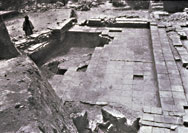ARCHEOLOGY Through his publishing work and enthusiasm for archaeology, Hokes amassed a handsome collection of antiquities. The Hokes Archives, as it has since come to be called, might be thought of as a kunstkammer (from the German word meaning "art cabinet"). Like any museum or archive, the kunstkammer has been considered an essential apparatus of the learned person since the sixteenth century. Against this perspective of some four centuries of museum history, the Hokes Archives is unusual due to its singular emphasis on rare cultures. Some of the more important aspects of the collection include the Arenot, an obscure tribal culture from north-central Turkey, the Apasht, from the Hindoo Kush region of Afghanistan and the Aazudians from the Upper Euphrates River in Iraq. (add pictures and links to each web area). |
|||||
 |
|||||